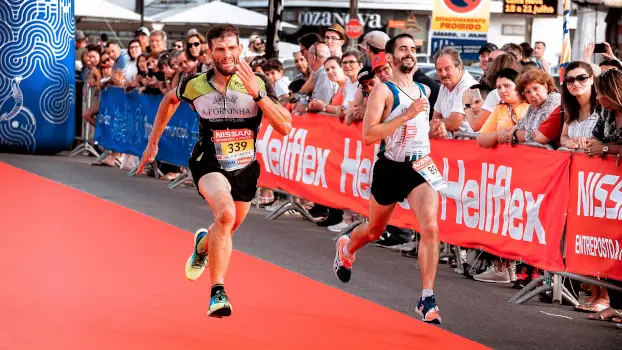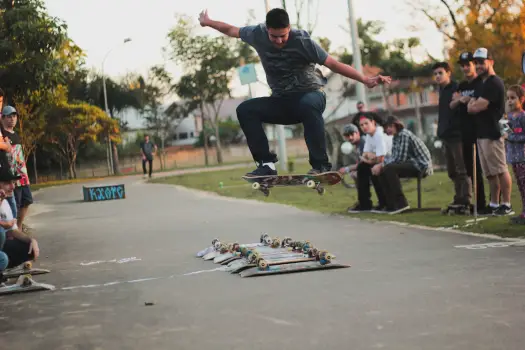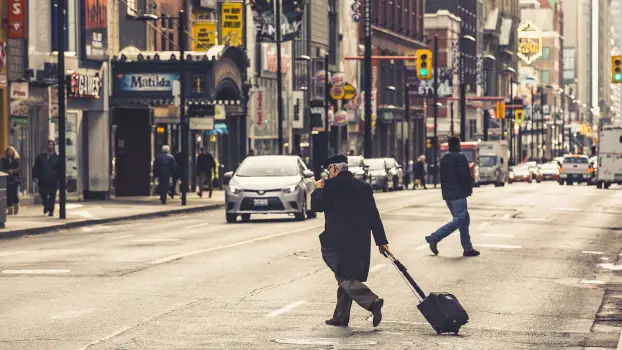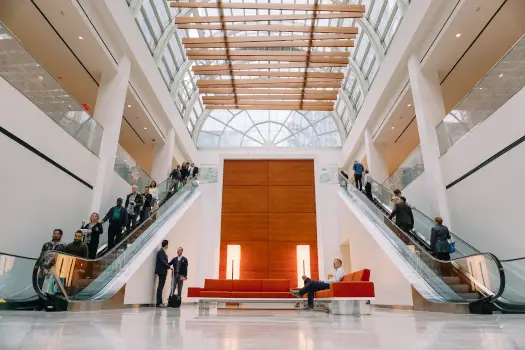A frame of reference, also known as a reference frame, is a theoretical framework that establishes a coordinate system and a set of reference points. It provides a basis for measuring and describing the position, velocity, and other properties of objects within that frame. The coordinate system and reference points allow for a consistent and reliable way to compare and analyze physical phenomena from a specific point of view.
Examples
Train

Suppose a train is in motion, and a person is sitting inside the train watching the surroundings. From their perspective, they will notice that the surrounding objects and the people on the platform appear to be moving. This observation is a result of the frame of reference chosen, which is the moving train. Since the person inside the train is moving along with the train, they perceive the stationary objects on the platform as moving in relation to their frame of reference.
Airplane

When observing the view from an airplane window while flying above a beach, one may notice that the people on the beach and the surrounding scenery appear to be moving. This phenomenon occurs due to the frame of reference being the airplane itself. As the airplane moves through the air, stationary objects on the beach seem to be in motion relative to the airplane. This perception is a result of the viewpoint from inside the moving airplane.
Rocket

During a rocket launch, as the rocket takes off from the Earth and ascends to a certain height, an observer inside the rocket would perceive the Earth as appearing to be moving. This perception is a result of the observer’s frame of reference being the rocket itself. From the viewpoint inside the rocket, the Earth seems to be in motion relative to the rocket’s position.
Athlete

During a race, when an athlete is running, they may perceive the audience standing alongside the road as appearing to be moving. Simultaneously, if someone from the audience looks at the athlete, they would perceive the athlete as moving. This phenomenon occurs because both the athlete and the audience have different frames of reference. From the athlete’s perspective, the stationary audience appears to be in motion relative to their own movement. Conversely, from the audience’s viewpoint, the athlete’s motion is observed relative to their stationary position. These differing frames of reference create the perception of movement for both parties involved.
Man sitting on a bench

When a man is sitting on a bench in a garden and observes a lady passing in front of him, he perceives her as moving forward. This is because his frame of reference is the bench itself, and any movement he witnesses is in relation to his stationary position. On the other hand, from the lady’s perspective, she sees the man as moving backward. This is because her frame of reference is the road, and any movement she observes is relative to her own motion. The differing frames of reference between the man and the lady create the perception of opposite directions of movement.
Skateboarder

When a skateboarder rides on the road among a group of people, they will notice that the people seem to be moving backward. This is because the skateboarder’s frame of reference is the skateboard itself. As the skateboarder moves forward on the skateboard, the stationary objects, including the people, appear to be moving in the opposite direction relative to their frame of reference. This observation arises from the relative motion between the skateboarder and the surrounding environment, emphasizing the influence of the chosen frame of reference.
Cable car

Imagine being seated inside a cable car, gently gliding through the picturesque mountains. Through the window, you spot a person standing on a hill. From the perspective of the cable car, the person appears to be moving backward. This is because the frame of reference is the cable car itself. Simultaneously, from the person’s viewpoint, they would perceive the cable car as moving forward. This difference in perception arises due to the distinct frames of reference between the observer and the person on the hill.
Rickshaw

When a rickshaw is in motion on the road, the driver observes other vehicles appearing to move forward from inside the rickshaw. This phenomenon occurs due to the chosen frame of reference, which is the rickshaw itself. Looking from the perspective of the rickshaw, the stationary objects and other vehicles on the road seem to be in motion relative to its frame of reference.
Rotating carousel

When inside a rotating carousel and observing the surroundings, one may notice that stationary objects and individuals, such as someone standing nearby, appear to be moving. This happens because the carousel serves as the reference point for observing or measuring the movement of other objects. From the perspective of the rotating carousel, stationary objects and individuals seem to be in motion relative to the carousel’s rotation.
Ship

When observing from inside a ship as it arrives at port, one may notice that the people on the port appear to be moving. This phenomenon occurs because the frame of reference is the ship itself. From the perspective of the ship, the stationary objects on the port seem to be in motion relative to its position. Similarly, individuals on the port would perceive the ship as moving based on their own frame of reference.
Car

While driving a car, it is common to observe a person walking on the road moving in the opposite direction. This perception arises due to the chosen frame of reference, which is the car itself. From the perspective of the car, the stationary objects and individuals on the road seem to be in motion relative to the car’s own movement.
Escalator

When standing on an escalator in a shopping mall, one can observe the movement of other people on the floor. This occurs because the frame of reference is the escalator itself. From the perspective of the escalator, the stationary objects and individuals on the floor appear to be in motion relative to its own movement. Likewise, individuals on the floor would perceive the person on the escalator as moving based on their own frame of reference.
Bus

Imagine a bus traveling on the road, with passengers seated inside. From the perspective of the bus, the passengers observe a person standing on the road appearing to move backward. This phenomenon occurs because the frame of reference is the bus itself. Similarly, from the perspective of the person on the road, the bus appears to be moving forward. This difference in perception is due to each individual’s frame of reference being aligned with the respective moving object.
Bicycle

Consider a scenario where a person is riding a bicycle in the park, while another person walks alongside. From the perspective of the cyclist, the person walking appears to be moving backward. This perception is due to the frame of reference being the bicycle. Conversely, the person on the ground sees the cyclist moving forward. The differing observations result from each person’s unique frame of reference, determined by their respective points of observation.
Earth

When observing the Moon from Earth, it becomes apparent that the Moon appears to be moving. This perception is due to the frame of reference being Earth, which gives the impression of the Moon’s motion. Likewise, if an observer on the Moon looks at Earth, they will perceive Earth as moving since their frame of reference is the Moon.
Related
- Air resistance examples
- Gravity examples
- Inertia examples
- Acceleration examples
- Momentum examples
- Mass examples
- Velocity examples
- Friction examples
- Frame of reference examples
Image credit
- The stock photos used in this post are sourced from platforms like Pexels, Pixabay, Canva, etc. Due to the age of the images, their specific origins remain unknown.
External links
- Lesson 9: Relative Motion and Frames of Reference – Studyphysics
- Inertial Frame of Reference | Overview & Examples – Study.com
- Frame of reference – Wikipedia
- Frame of Reference – Fort Bend Independent School District
- Frames of Reference – Isaac Physics
- Frame of Reference: Overview & Definition – Physics – Vaia
- Frame of Reference – Scholarly Community Encyclopedia
- Frame of Reference – ChangingMinds.org
- Reference Frames Examples (Physics) – Fact / Myth
- Reference frame | Definition, Types & Examples – Britannica
- Introduction to reference frames (video) – Khan Academy
- 3.1 Frame of Reference and Relative Velocity – CK-12 Foundation
- Frame of Reference – The Pedagogy of Confidence
- Frame of reference – Academic Kids
- Describing Motion – Types of Frames of References – Turito
- Frames of Reference: Definition and Examples Essay – IvyPanda
- Frame of reference definition in American English – Collins Dictionary
- Internal frame of reference – definition, examples and importance – Fingerprint for Success
- Examples of “Frame-of-reference” in a Sentence – YourDictionary
- What are examples of non inertial frames of reference? – Quora
- Frame of reference Definition & Meaning – Merriam-Webster
- Frame of reference Definition & Meaning – Dictionary.com
Deep
Learnool.com was founded by Deep Rana, who is a mechanical engineer by profession and a blogger by passion. He has a good conceptual knowledge on different educational topics and he provides the same on this website. He loves to learn something new everyday and believes that the best utilization of free time is developing a new skill.
